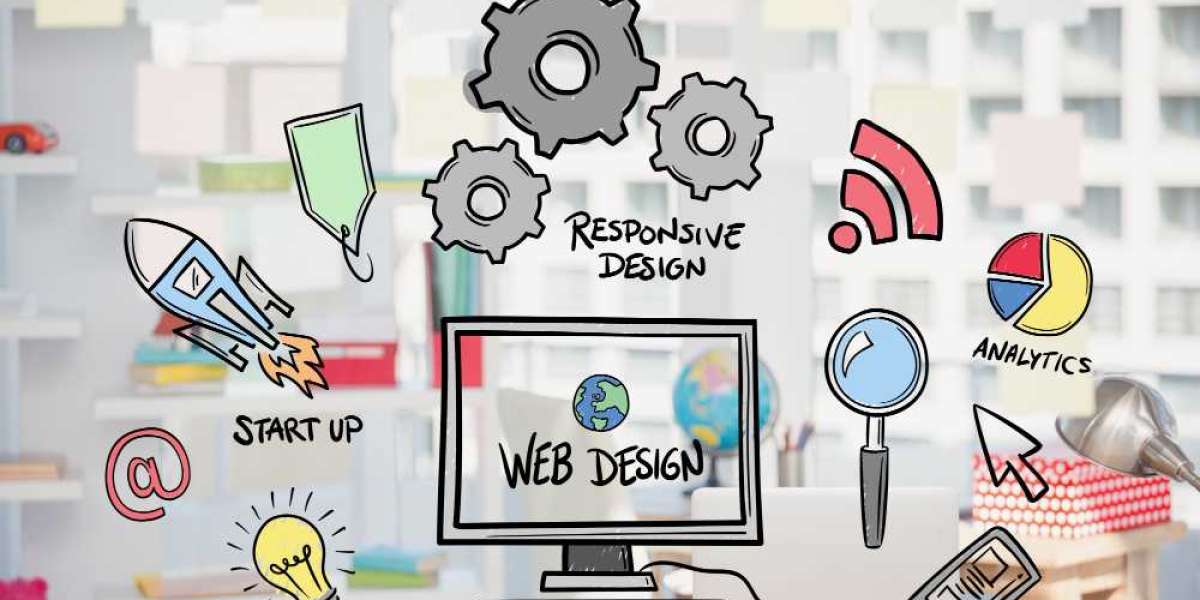In today’s digital landscape, artificial intelligence (AI) is no longer just a buzzword—it’s a powerful tool transforming web applications. From facial detection in social media to real-time object recognition in e-commerce platforms, AI-driven image recognition is revolutionizing how apps interact with users. If you're looking to elevate your application’s functionality and user experience, adding AI-powered image recognition is a strategic move. Businesses partnering with the Best Web Development Company in India are increasingly leveraging this cutting-edge feature to build intuitive, intelligent web solutions.
What is AI-Powered Image Recognition?
AI-powered image recognition refers to the ability of machines to detect, classify, and process images the way humans do—but often faster and with greater accuracy. It combines computer vision and machine learning (ML) algorithms to analyze image content, recognize patterns, and deliver useful data back to the application.
Use Cases of Image Recognition in Web Apps
E-commerce: Visual search and product tagging.
Healthcare: Diagnostic tools analyzing X-rays and scans.
Social Media: Facial recognition and automatic tagging.
Security: Surveillance systems that identify threats.
Travel Automotive: Real-time identification of objects on the road.
Education: Analyzing diagrams and handwritten content.
With AI-powered image recognition, web apps can offer smarter, more personalized user experiences, making them more engaging and competitive.
Tools and Libraries to Get Started
Adding image recognition doesn’t require reinventing the wheel. Thanks to the advancements in cloud computing and AI, a range of powerful tools are available for developers.
1. TensorFlow.js
An open-source library by Google, TensorFlow.js allows you to run pre-trained machine learning models directly in the browser or Node.js environment. Perfect for real-time performance without server-side processing.
Features:
Easy integration with frontend frameworks.
Pre-trained models for face detection, object classification, etc.
Real-time predictions in the browser.
2. Clarifai
Clarifai is a robust AI platform offering image and video recognition APIs that can identify thousands of objects, scenes, and tags in images.
Features:
Highly accurate, pre-trained models.
Supports custom training and workflows.
Scalable and suitable for large applications.
3. Google Cloud Vision API
Backed by Google’s powerful AI infrastructure, this API extracts information from images, including label detection, OCR (Optical Character Recognition), and landmark detection.
Features:
Fast, reliable, and supported by Google Cloud.
Easy to integrate with any web application.
Supports multilingual text recognition.
4. Amazon Rekognition
Offered as part of AWS, Amazon Rekognition provides detailed analysis of images and videos, identifying people, objects, scenes, and even inappropriate content.
Features:
Seamless integration with AWS services.
Face comparison and emotion detection.
Scalable for enterprise-level apps.
Step-by-Step Guide to Adding Image Recognition
Here’s a simplified process for implementing AI-powered image recognition into your web application:
Step 1: Define Your Requirements
Determine what exactly your application needs to recognize:
Faces?
Objects?
Text?
Custom elements?
Knowing the use case helps you choose the right AI service or library.
Step 2: Choose the Right Tool or API
For a quick, ready-to-use solution, cloud APIs like Google Vision or Amazon Rekognition are ideal. For more control or offline support, TensorFlow.js or OpenCV may be better.
Step 3: Integrate the API or Library
Most APIs offer SDKs and RESTful endpoints. Here's an example using Google Cloud Vision:
Step 4: Handle the Response
The AI tool will return data about recognized elements. You’ll need to parse this data and display or process it based on your app’s functionality.
Step 5: Optimize for Performance
AI processing can be resource-heavy. Optimize by:
Using compressed images.
Caching frequent results.
Running tasks asynchronously.
Step 6: Ensure Privacy and Compliance
When dealing with images, especially personal ones, make sure your app complies with privacy regulations like GDPR or CCPA. Inform users and get consent when necessary.
Key Benefits of Adding Image Recognition
1. Improved User Experience
AI-driven features like visual search, automatic tagging, and real-time suggestions streamline the user journey, making interactions more engaging and efficient.
2. Increased Efficiency
Automation of repetitive tasks (e.g., categorizing images or detecting inappropriate content) can save time and reduce manual work.
3. Better Accessibility
Image recognition can be used to generate image descriptions, improving accessibility for users with visual impairments.
4. Advanced Security Features
Face recognition and anomaly detection can be used to build secure, user-specific authentication systems or monitor systems for threats.
5. Smarter Insights
AI can provide valuable analytics by analyzing visual data, helping businesses make data-driven decisions.
Challenges and How to Overcome Them
Accuracy Concerns
Low-resolution or poorly lit images may produce inaccurate results. Use high-quality inputs and choose models trained on diverse datasets.
Data Privacy
Sensitive images must be handled securely. Use encryption and secure cloud platforms to protect data.
Cost Management
Some APIs charge per request or per image processed. Monitor usage and scale wisely. Open-source alternatives can be cost-effective for small apps.
Future of AI-Powered Image Recognition
The possibilities are endless. With the rise of generative AI and deep learning, we can expect more sophisticated applications like:
Real-time video analysis in browsers.
Multimodal AI integrating text, image, and speech.
Edge AI models that work offline or on-device.
Businesses that integrate such technologies today will gain a competitive advantage in tomorrow’s digital economy. That’s why companies turn to the Best Web Development Company in India for strategic, future-ready AI implementation.
Final Thoughts
AI-powered image recognition is no longer futuristic—it’s practical, powerful, and accessible. Whether you're building a startup MVP or scaling an enterprise app, this technology opens the door to smarter, more intuitive user experiences. From choosing the right tools to ensuring security and performance, thoughtful implementation is key.
Ready to elevate your web application? Partner with Dignizant Technologies a trusted name when it comes to innovative and AI-integrated development solutions.







